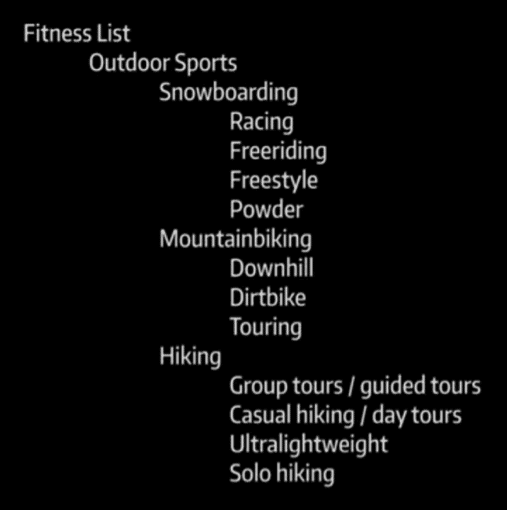This post is by Manuel Becvar, Founder & CEO of sourcing education site Import Dojo.
In my last post, I covered nine popular ways to find your own private label product niche. Those methods can still work, but a more advanced approach that can be really successful is to develop your own product from scratch.
In my opinion, this is the most important aspect to your long term success on Amazon: product innovation instead of improvement.
What does that mean? It means you actually listen to what the market needs and wants, and develop your own product to fit, instead of creating what you think people want.
That’s a lot easier said than done, so here’s my best advice to get started developing your own products. Get it right, and you can build a great business for the long term, instead of just copying one product after another.
1. Start by finding your niche
In my last post I outlined several ways to find your Amazon niche. That is even more important when you are creating new products, as your whole brand identity will be built around it.
So find your niche first, and make sure it’s one that you have at least some level of personal interest in. It will be hard to innovate with a new product if you have no knowledge or opinions at all on that area. All my brands are based around products that I have a passion for, or at least some level of interest in.
Also, many people start with the idea of a product first and then notice that the market entry level is too high (either dominated by brands or too much capital needed). It’s better to assess the market conditions for your niche as a whole, before moving onto your first product.
2. Keep your brand consistent
Let me explain how I go about developing products. The goal is to create one or more rockstar products that define your brand and guarantee the success of your company. Think about it as a seed that you plant for the future. It takes time.
Ideally the first product is what defines your brand, and you should also stick to those values. Just like Nike or Apple are famous for their expertise in their field, you should be known in your field. The same goes for every industry. If you think about the best Italian restaurant in town they are probably famous for their pasta or pizza, but not for having a fusion of Italian and Mexican food.
So, stick to your assortment and branding strategy. By all means, sell underlying product groups and assortments but don’t sell Bluetooth speakers and shower heads. Focus on one core product range.
This is where many people make their first mistake – starting with a product without defining their niche. Yes, five years ago you could find almost anything to buy from Alibaba, and it would sell on Amazon. Later you’d think about other products that could also sell. But those days are over.
You’ll need a clear branding and marketing strategy as well as a product-market fit: one of the most important concepts in business today.
3. Go for an established market
Look for an interesting market that is already established.
Obviously you can follow the news to try and find the “next big thing”, but that’s not the ideal way. People often think they can make easy money if they could only get onto trends like selfie sticks and fidget spinners early enough, but that seldom works. Marketing gurus will use examples like those to try and sell you pipe dreams of making $40,000 per month with only a few minutes work each day. I can promise you that businesses like that do not really exist.
So, look for existing markets that have reached a mature size. Otherwise there won’t be an existing base of customers, which you need to make sure you have a product-market fit.
Mature niches give you the best feedback. If you don’t have an established market that you can collect feedback from, you will have to establish a whole new market by yourself. That’s very difficult, and usually very expensive.
Product innovation doesn’t mean reinventing the wheel. Find a market that already exists, and develop a product to fit.
4. Find a niche that you can innovate in
As I said earlier, it will be very difficult to develop a new product in a niche that you know nothing about. So, instead of starting your search with Amazon, trend sites or market research tools, you should start with yourself.
Make a list of your interests, and split it down into smaller subcategories. Only list general interests at first and research each one. This could be something that you identify with, a hobby, an expertise, part of your profession or similar.
Break it down and get into the smallest niches. For example, if you are into outdoor sports go down into sub-niches like these:

It’s those smallest niches that can lead you to passionate communities on Facebook, forums or Reddit. You want to really connect with these guys and solve a problem for them.
In an ideal world you’ll find interests that you are totally enthused about. But don’t be an artist. Artists don’t survive on Amazon. Don’t try to invent trends that don’t have a future or demand. Don’t fixate yourself on one idea or industry because it’s your personal favorite.
Remember, it’s all about product-market fit, and it can’t fit if there is no market.
5. Have the right mindset
It’s important to leave your ego out of the business. I’ve seen a few people in my time (including myself) that were too attached, and convinced themselves that their idea was what the world needed.
Look at your business objectively and don’t let your personal emotions or preferences interfere too much. Only concentrate on what the market needs and not what YOU think the market needs. Always keep the product-market fit in mind.
Do something that you aren’t comfortable with. Not many people go into higher-priced or difficult categories. But that’s where the air isn’t so thin as in low-priced and everyday items. You might think you don’t have the capital for that, but this is a business like any other and sometimes you need to take risks and make investments.
Fifteen years ago it was unimaginable to start a business that could generate $100,000 within the first year with just a $5,000-10,000 investment. Today, we have all the tools that make it possible: social media, Jungle Scout, Amazon PPC ads and others. It takes gut feeling, data analysis, community access and brand building to succeed. But it can be done.
I often hear that people don’t want to invest $200 into a custom-made sample for their idea. If you aren’t willing to take even that small step, then this is really not for you.
6. Research problems in the niche
Find out what the problems are in your niche. Are there products that aren’t around, but people wish they existed? Or sometimes it’s simple things that make a product easier to handle or just more pleasing in its design.
Can you create a product that makes people’s lives easier, and casts you as the hero for providing it? Sometimes these communities are desperately waiting for companies to solve their problems or introduce a new product that they desperately want.
Don’t jump on trends, but bring real innovation to the market. This does not mean that you redesign the fidget spinner or bring it out in different colors. Create a genuine new product with a great feature from the beginning. Customers want to be wooed.
Your first rockstar product should be something that you can sell over and over again for a long time. Basically a long-term cash cow. Sure, competitors will come and copy you, but you’ll always be ahead and working on your next product while the competition tries to catch up with your first. Keep finding problems and creating more products that solve them.
7. Make sure you can access the market
Before you even get started with a product idea you should make sure that you can actually reach your target audience and customers. A good example where you’ll fail would be branded goods like women’s bags. In this niche, consumers want to have branded things and it doesn’t really matter if your product is superior.
Let’s say you had the idea of a women’s tote bag, found a supplier, ordered the product, listed it on Amazon and now you come to realize that people are not buying your bags. Naturally, because shoppers want to buy branded products like Gucci, Louis Vuitton etc. You’ll also have difficulty getting magazines or influencers to write about your bags because they usually promote the big brands.

To tap into such a market you need connections, years of marketing and essentially a lot of money. This can quickly be the end of your ecommerce career. What’s more, on high competition items like women’s bags you also have high PPC costs that can quickly evaporate your profits.
So again, you need access to the marketplace and its customers. You should be thinking of that right from the start, otherwise you will be constantly in survival mode.
8. Listen in and ask questions
What are the communities saying in your niche? What are people talking about right now? Is there a certain problem within a niche? Here the community work is really very important.
Be active in one or two communities and really listen to what customers prefer, what brands are popular, what are those brands are doing or not doing at the moment and so on. A great indication of whether a product is needed is when people say that they have to use other products in combination to make it work how they want.
For example, when Bitcoin and all the other crypto-currencies came out, you could download wallets to your computer or save them online on exchanges. Many people worried about what would happen if the exchange went belly up, or if their computer died on them.
Then Ledger came and developed a hardware wallet that would store your crypto-currency. You could put your Ledger hardware wallet safely in a locked safe. Ledger was sold out for months and couldn’t even cope with demand. They listened to a problem in a community and solved it by offering a solution.
9. Know the attributes of successful products
You always see the following in successful new products:
- A great solution
- Quality that you can trust
- Easy to understand
- Easy to use
Does your product have all those attributes? If not, how can you change your product so that it does?
Imagine you are your own customer. Would you be satisfied with your product? Why would customers not buy your product? What does the product do for your customers? What doesn’t it do?
You also have to come back to this point: are you your own biggest fan or are you solving a real problem? Consider the product objectively.
To further define your product, split it into three categories:
- The functional part: what problem does it solve?
- The emotional part: how do people feel when they buy or use your product?
- The social part: is your product a conversation-starter? Does it show a certain social status?
Remember that your product should solve a problem or be part of your costumer’s daily life. Why does someone need your product? Can your product solve the customer’s frustration with other products that they use?
10. Have a reality check
Take another step back and find out if there are any big barriers to going ahead with the product.
Sometimes industries are tied down with all the suppliers working for a few major customers. Do you even have a chance to work with the suppliers that you need? Or are there patents, licenses or royalty fees? Sometimes the costs, licenses or certifications required are simply too high.
Also be honest with yourself and ask if you have the technical know-how to develop such a product. Sure, you can work with engineers and designers, but you need to understand enough to collaborate on prototypes and make decisions based on their advice.
Another point is your selling price. Can your target audience actually afford your product? Your solution might work perfectly but be way out of their price range. Talk to the community groups and ask what they would pay for a certain product.
Another option to validate a product or its price is to start a PPC campaign on Facebook with a “buy now” button that leads to a page where people can buy samples of your product. Obviously there is no stock but this method shows if people are interested at all. You can then look at the data and make better decisions on the price and product development.
Finally, think about if you can scale the business. Will this be a “one-hit wonder” that there is no way to ever repeat, or can you see other problems in this niche just waiting for a solution?
Good things take time
At this point, you are probably overwhelmed with all the work ahead, and are thinking that it will never happen.
Simply put, good things take time and you don’t need to rush. Imagine a long hike that you have to plan ahead of time. I always wanted to hike the Pacific Crest Trail in the US. The whole trip lasts four to six months and you have to prepare yourself with good equipment, read about how to find water and food, get maps and so on. It’s a long process to get prepared.
With your product development, there will be days when you are super excited about your idea, and can’t sleep because your mind is racing with all the things you want to do. The next day, a difficult situation will bring you down and make you feel that your idea is nothing special. Give it time. You could ignore your ego and continue, make improvements to your product, or just say: “No, this is too much to handle.” There’s no shame in stopping.

But don’t give up just because the first suppliers you find can’t do what you ask. For one of my own products, I looked for a supplier for six months and finally found the right one at a trade fair in China. Try to stay open to suggestions though. If ten out of ten suppliers say your product can’t be made the way you want, they might just be right.
Don’t forget, there will always be problems along the way on any long journey. Sometimes you won’t make any progress, and sometimes you’ll go backwards. But then other times, results will come much quicker and in a way that you didn’t anticipate.
It’s a personal journey as well as a business one. Be honest with yourself and see if you can clear all your doubts. If you get that far, you will realize that the world does need your product and they will happily pay for it because it will make their lives better.
There will be no reason left not to do it, so the only sensible decision will be to push ahead to success. You’ll be a true innovator, and that’s great, because the world really doesn’t need any more me-too products.
This post was by Manuel Becvar, Founder & CEO of sourcing education site Import Dojo.
With the new Find Me a Product! service, Manuel personally finds products for clients to sell on Amazon. The service includes eight to ten hours of product research plus one hour of coaching. The service is limited to 15 slots per month and sells out quickly, but there is a waitlist so sellers can get notified as soon as new slots are added.

I have an idea for Clean Energy, but need more financial help with the Last phases of Development. We have already invested $200k and are Almost there. Are you in Position to Assist?